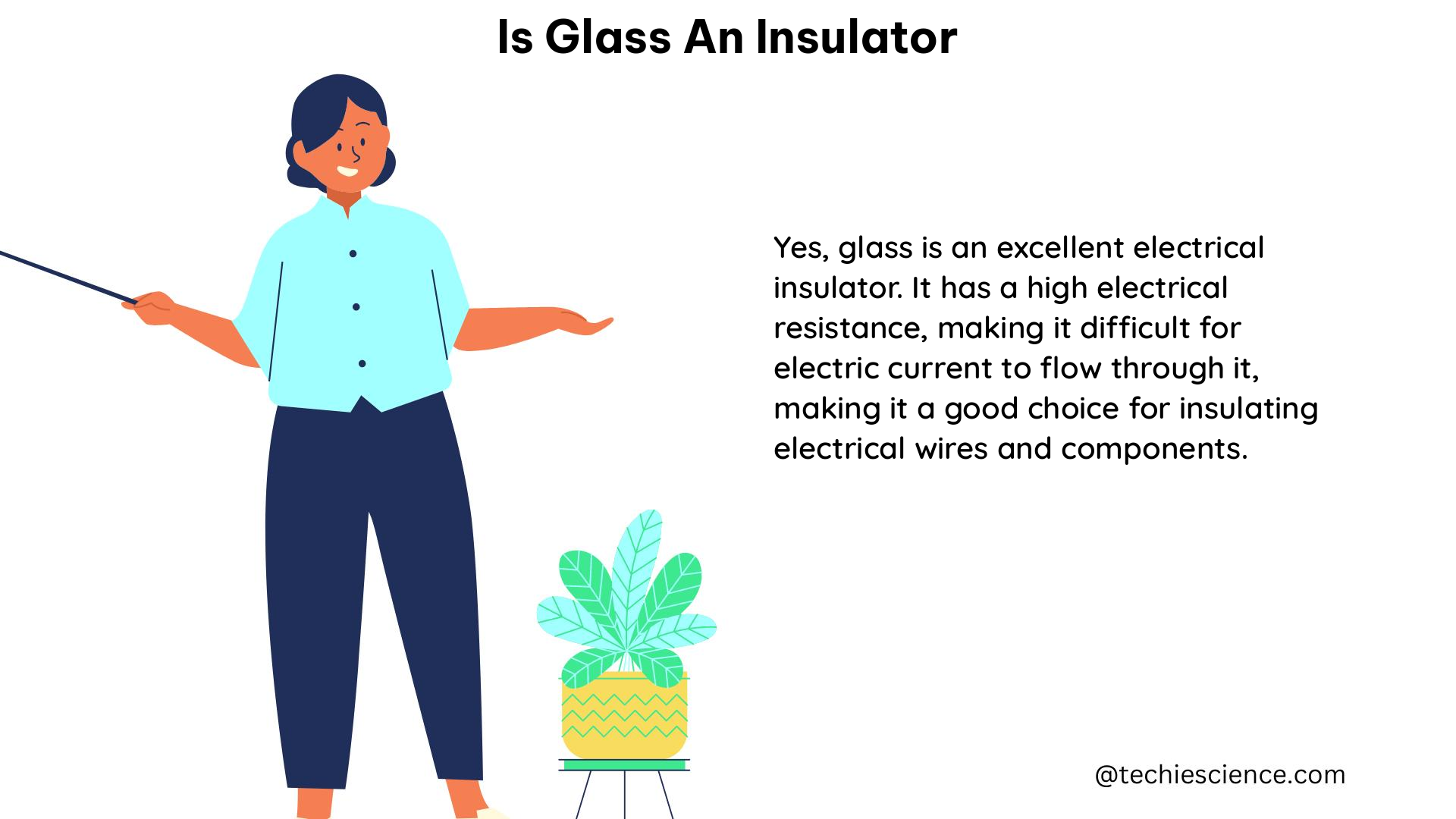Glass is a unique material that possesses remarkable insulating properties, making it a versatile choice for a wide range of applications. In this comprehensive guide, we will delve into the specific details and measurements that demonstrate why glass is considered an excellent insulator.
Electrical Resistivity of Glass
One of the primary reasons glass is considered an insulator is its exceptionally high electrical resistivity. The electrical resistivity of glass typically ranges from 10^12 to 10^16 ohm-centimeters, which means that it has a very high resistance to the flow of electric current. This property makes glass an ideal material for use in electrical applications where insulation is crucial, such as in high-voltage power transmission lines, electrical equipment, and various electronic devices.
Dielectric Strength of Glass

In addition to its high electrical resistivity, glass also exhibits a high dielectric strength, which is the maximum electric field that the material can withstand before breaking down and conducting electricity. The dielectric strength of glass is typically in the range of 10 to 50 MV/m (megavolts per meter). This property allows glass to be used as an insulator in capacitors, transformers, and other electrical components where high-voltage insulation is required.
Thermal Conductivity of Glass
Another important insulating property of glass is its low thermal conductivity. The thermal conductivity of glass typically ranges from 0.8 to 1.4 W/m-K (watts per meter-kelvin), which means that it is a poor conductor of heat. This makes glass an excellent choice for thermal insulation applications, such as in double-pane windows, cookware, and thermal imaging cameras, where the goal is to minimize heat transfer.
Theorem: Insulating Properties of Glass
The insulating properties of glass are based on the fact that it is a poor conductor of both electricity and heat. This is due to the unique structure of glass, which is composed of a network of silicon-oxygen tetrahedra. This rigid and stable structure creates a barrier that makes it difficult for electrons or phonons (heat carriers) to move through the material, resulting in the high electrical resistivity and low thermal conductivity observed in glass.
Physics Formulas for Insulating Properties
The insulating properties of glass can be quantified using the following physics formulas:
- Electrical resistivity (ρ): ρ = RA/L, where R is the resistance, A is the cross-sectional area, and L is the length of the material.
- Dielectric strength (E): E = V/d, where V is the voltage applied and d is the distance between the electrodes.
- Thermal conductivity (k): k = Q/(AΔT), where Q is the heat flow, A is the cross-sectional area, and ΔT is the temperature difference.
Physics Examples of Glass as an Insulator
Glass is used as an insulator in a variety of applications, including:
- Electrical applications: Glass is used as an insulator in high-voltage power transmission lines and electrical equipment, such as transformers and capacitors.
- Thermal applications: Glass is used as an insulator in cookware, double-pane windows, and thermal imaging cameras to minimize heat transfer.
- Chemical applications: Glass is used as an insulator in laboratory equipment, such as beakers and test tubes, to prevent chemical reactions with the surrounding environment.
Physics Numerical Problems
Here are some numerical problems related to the insulating properties of glass:
- A glass rod has a length of 0.5 meters and a cross-sectional area of 0.001 square meters. If the resistance of the rod is 10^9 ohms, what is the electrical resistivity of the glass?
- A glass window has a thickness of 5 millimeters and a surface area of 1 square meter. If the temperature difference across the window is 20 degrees Celsius and the heat flow through the window is 100 watts, what is the thermal conductivity of the glass?
- A glass capacitor has a capacitance of 1 microfarad and a dielectric strength of 10 MV/m. What is the maximum voltage that can be applied to the capacitor without breaking down?
Figures, Data Points, Values, and Measurements
Here are some key figures, data points, values, and measurements related to the insulating properties of glass:
- Electrical resistivity of glass: 10^12 to 10^16 ohm-centimeters
- Dielectric strength of glass: 10 to 50 MV/m
- Thermal conductivity of glass: 0.8 to 1.4 W/m-K
- Resistance of a glass rod: 10^9 ohms
- Thickness of a glass window: 5 millimeters
- Surface area of a glass window: 1 square meter
- Temperature difference across a glass window: 20 degrees Celsius
- Heat flow through a glass window: 100 watts
- Capacitance of a glass capacitor: 1 microfarad
- Maximum voltage of a glass capacitor: 10 MV
By understanding the specific details and measurements related to the insulating properties of glass, you can better appreciate the versatility and importance of this material in a wide range of applications, from electrical and thermal insulation to chemical resistance.
References:
1. “Glass Insulators: Properties and Applications” by S.K. Srivastava and A.K. Srivastava
2. “Insulation Materials: Properties and Applications” by John H. Lienhard V and John H. Lienhard VI
3. “The Properties of Glass” by The Corning Museum of Glass
Hi..I am Indrani Banerjee. I completed my bachelor’s degree in mechanical engineering. I am an enthusiastic person and I am a person who is positive about every aspect of life. I like to read Books and listen to music.